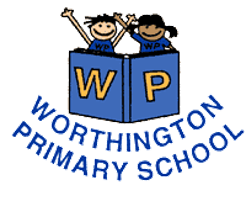Design and Technology
Worthington Primary School Curriculum Statement
At Worthington Primary School we aspire to make the learning ambitious for all learners. Our school curriculum includes the knowledge, skills and life experiences children need to thrive. Children are encouraged to become independent and creative problem solvers. They think as individuals and also as part of a team. It is our intention to nurture a love of designing and making with relevance to the modern changing world and its development. Children will improve their communication skills through Design and Technology, specifically when children are asked to collaborate with their peers and communicate their thoughts and ideas. Design and Technology also builds resilience and problem-solving skills as children are encouraged to face problems that may arise through the design processes of their product. Children are given time to go back and revisit their product to ensure it is fit for purpose.
We encourage a ‘love of learning’ in everything the children do and promise to provide dynamic, inspiring and engaging lessons…so together ‘We Only Reach for The Highest’.
Curriculum Intent
At our school, our intent for Design and Technology (D&T) is to provide all pupils with a well-rounded education that nurtures their creativity, problem-solving abilities, and critical thinking skills. We believe that D&T plays a crucial role in preparing children for a future that requires innovative thinking and practical skills. Through our D&T curriculum, we aim to:
- Develop pupils' knowledge and understanding of the design process, including researching, designing, making, and evaluating.
- Foster creativity and imagination, encouraging pupils to generate and develop original ideas.
- Promote problem-solving and critical thinking skills through practical activities and projects.
- Enhance pupils' technical skills, enabling them to safely use a variety of tools, equipment, and materials.
- Provide opportunities for pupils to collaborate and work effectively in teams, promoting communication and interaction.
- Foster an appreciation of the impact of design and technology on individuals, societies, and the environment.
- Equip our pupils with the skills and knowledge needed to pursue further study and potentially careers in design and technology-related fields.
Curriculum Implementation
Our D&T curriculum is carefully planned and sequenced to ensure progression and deepening of knowledge and skills from nursery through to Year 6. We align our program with both the Early Years and National Curriculum, ensuring coverage of the key concepts and processes required at each key stage. The curriculum also reflects the interests and experiences of our pupils, creating engaging and meaningful learning opportunities. We provide a broad range of experiences within D&T, covering various aspects, including structures, mechanisms, electrical systems, textiles, and food technology. Our subject leaders collaborate with teachers to ensure the curriculum is responsive to the needs and interests of our pupils.
We provide regular opportunities for pupils to develop their technical skills and knowledge using a variety of tools, equipment, and materials, ensuring they have access to appropriate resources to create high-quality outcomes. Teachers facilitate a wide range of practical and hands-on learning experiences, providing pupils with opportunities to explore, investigate, and develop their ideas through designing, making, and evaluating. We provide clear explanations, modelling of processes, and demonstrations, scaffolding learning through effective questioning and feedback to support pupils' understanding and progression. Pupils have opportunities to work individually and collaboratively, developing their design and manufacturing skills through a range of practical tasks and projects. We make connections to real-life contexts and past and present design, technology, and engineering practices to enhance relevance and promote critical thinking.
Our D&T curriculum focuses on developing a range of skills. Pupils learn to plan, design, and make products using different materials and tools. They explore the properties of various materials, learning about their strengths and weaknesses, and develop techniques to shape, join, and finish them effectively. They also learn to evaluate and improve their designs through testing, adapting, and refining their ideas.
Curriculum Impact
The impact of our outstanding D&T provision is reflected in the pupils' progress, attitudes, and achievements:
- High Levels of Engagement: Pupils demonstrate enthusiasm and motivation when participating in D&T activities. They are eager to explore ideas and take ownership of their designs, showing resilience when faced with challenges.
- Critical Thinking and Problem-Solving: Pupils develop strong critical thinking skills by identifying problems and generating creative solutions. They can evaluate and refine their designs, making informed decisions based on their understanding of design principles.
- Technical Skills Development: Pupils acquire a broad range of technical skills, confidently employing tools, equipment, and materials safely and effectively.
- Collaborative Working: Pupils understand the value of effective collaboration and can work successfully in teams, listening and responding to the ideas of others, and contributing constructively.
- Cultural and Environmental Awareness: Pupils appreciate the diversity of design across cultures and demonstrate an understanding of sustainability principles, considering social and environmental impacts in their designs.
- Progress and Attainment: Pupils make sustained progress in D&T, achieving or exceeding expected standards. They are well-prepared for further study and display a passion for design and technology-related fields.
By aligning our intent, effective implementation strategies, and closely monitoring the impact of our provision, we ensure an outstanding D&T program that equips our pupils with the skills and knowledge necessary to thrive in a rapidly changing world. Feedback is given to the children as soon as possible, and marking work is guided by the school’s Marking Policy
